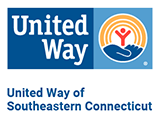Column by Virginia L. Mason, featured in The Bulletin
On Oct. 18, the United Way of Southeastern Connecticut celebrated Crop Walks and the generous donations that have made a difference in the lives of those who are food insecure abroad and in our community.
Uniting the community on a Sunday in October grew in importance this year. Hunger walks are about facing hunger issues, but also about facing the need to be inclusive and loving as we bring our county and its communities together. Those who participated in “Ending Hunger One Step at a Time” faced the added challenge of being safe and virtual. A Crop Walk group in Illinois advertised recently, “The walk is virtual, but the needs could not be more real.”
This year, participants had the ability to avoid the risks of the pandemic by wearing masks and avoiding the risks of walking or sitting with a group. Everyone was invited to choose a virtual route, short or long.
Where does the United Way fit in with a Crop Walk for Hunger?
United Way of Southeastern Connecticut is a part of the community effort for the Crop Walk and a recipient of donations from the walk that benefit the Gemma E. Moran United Way/Labor Food Center.
The major donations are given to the Church World Service for help all over the world. Locally, Gemma E. Moran started the Food Center effort many years ago and is still alive and advocating for the prevention of hunger. The Food Center has received money from the generosity of Crop Walkers over the years, as the donations are distributed internationally and locally.
CROP Hunger Walks are community-based walk events held in cities and towns across the United States. The funds are raised to support the global mission of Church World Service, a faith-based organization that promotes “just and sustainable responses to hunger, poverty, displacement and disaster.” Twenty five percent of the funds raised are returned to the host community to support local hunger fighting efforts. The rest is received by those in need in overseas programs.
The Crop Project was first organized in 1947 when farmers were asked to donate food and seed crops to our hungry neighbors in post-World War II Europe and Asia, a program that soon became known as the Christian Rural Overseas Program - CROP. In 1969 in Bismarck, North Dakota, and in 1970 in York, Pennsylvania, the first walk events were organized to raise money to support CROP. Since then, CROP Hunger Walk events have been held in hundreds of communities large and small raising millions of dollars to eradicate hunger and poverty.
CWA believes that ending hunger is possible, and it is possible in our lifetime.
